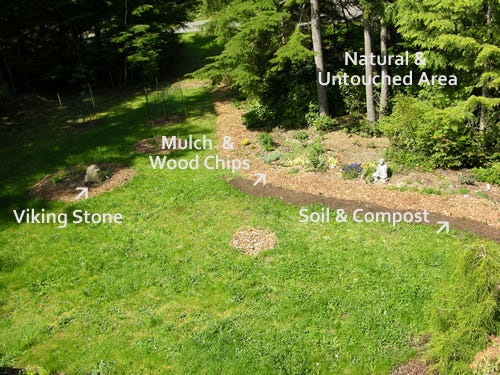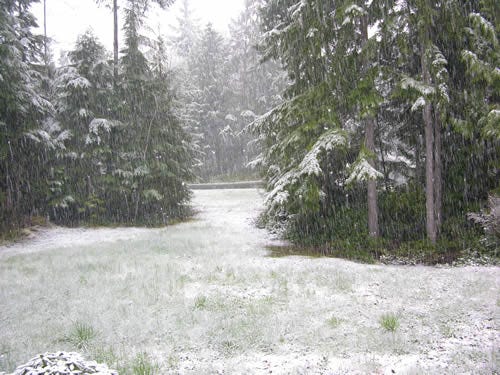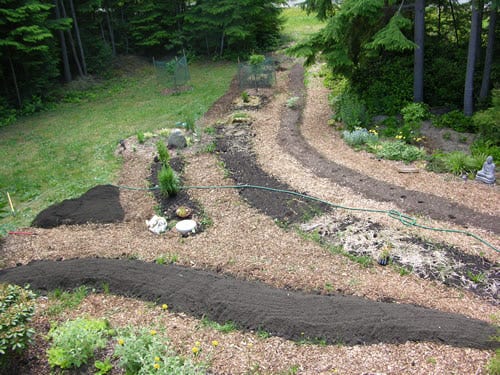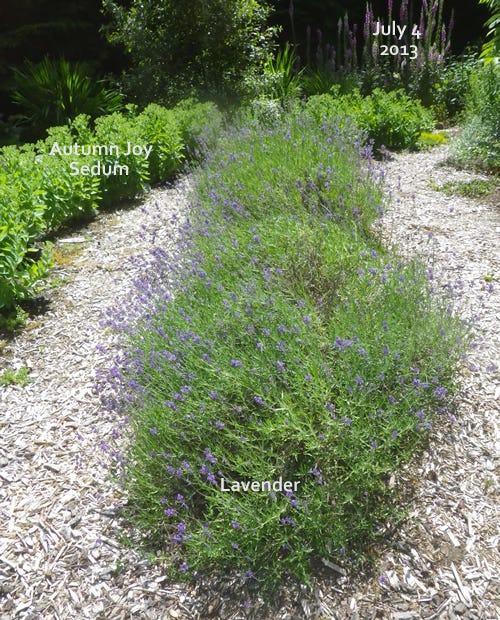When consulting in Germany, a beekeeper patient described a catastrophe facing bees, later referred to as colony collapse disorder. That was about twenty years ago, and I would like to share my response to the global issue of food quality and food sovereignty.
Back then, I was still recovering from mold exposure and infection and did not have a whole lot of energy, but I wanted to do my part to help the bees. Because of the mold challenge, I had studied a lot of plants and had come to revere them.
The first thing I wanted to do was grow some herbs and encourage others to do the same. All the domain names I wanted were already taken, and after days of trying, I ended up with LandscapingRevolution.com which I came to love because, for one, it ties botany to astrology. The word “revolve” refers to the motion of the planets, meaning that the changes we make bring us into harmony with the Universe. Like many, I used to think of revolutions as rebellious and potentially violent, but the stars were with me because I stumbled on the work of Masanobu Fukuoka, the author of One Straw Revolution which is a masterpiece that became the catalyst for the permaculture movement. We might also suggest that Fukuoka-sensei taught the Zen of gardening. He devised the easiest and most natural system of agriculture in recorded history: no till, no dig, no machines, no chemicals, and almost no weeding.
This suited my energy level perfectly. I was around 60 then, not decrepit, but not game for anything strenuous. My house sits on half an acre, most of which has big trees; but from a real estate perspective, the house and landscaping are totally conventional for the Pacific Northwest, not one iota of imagination. The floor plan suited my life style, but otherwise there is absolutely nothing to get excited about. There was a fairly large lawn in front of the house, totally visible from the road so this is where my revolution was to begin.
Inspired by Fukuoka-sensei, I decided not to tear up anything. Boxes arrive all week long so there is always plenty of cardboard. I removed the tape and covered the lawn with cardboard. This was kept from blowing away by a truckload of topsoil.

To nourish pollinators, a huge variety herbs and medicinal plants were cultivated, mostly from seeds but sometimes with cuttings or treasures found at the local farmer’s market. To prepare, dozens of e-mails had been sent to entomologists, botanists, beekeepers, organic farmers, and seed savers to determine what was most needed by bees and butterflies. Once flowering, it was up to me to observe the preferences, and there were many touching experiences, for instance, I watched one bee fall asleep inside a rhododendron flower.
Another looked paralyzed, and I helped him to reach easy to gather pollen from the Autumn Joy sedum. This turned out to be the greatest help because the flowers bloom late in the season and provide much needed nutrition, sometimes all the way into November.
To document everything, I took thousands of pictures, but the next step was to build some motels, first for the mice that were unwelcome visitors and then for the bees. This was a lot of fun, and felt like a joint venture with Nature.
Ultimately, I observed desperation as butterflies competed with bees and hummingbirds for the available food and medicine. The next step was therefore to bring more people on board, keep up the momentum of the revolution, but put the emphasis on service so I registered the domain name seedseva.com, and started with plants I knew were helping pollinators. People sometimes need motivation so we should understand that we will eat grains if the pollinators can’t keep up with their jobs.
To be honest, the biggest challenge has been to arouse more commitment among others. Thus, with all the threats to our food supply, I am now launching a new round of endeavor. People are worried about food shortages and food prices. My mother discussed this when I was still in my early teens. Her view was that when people are desperate, they will do whatever it takes to survive, including stealing from others. We are already seeing this on a large scale, but the goal should be to produce enough for everyone so I did a little math, not very sophisticated so don’t panic.
The U.S. supposedly has a couple billion acres of land. It’s not the biggest country in the world. It is only the fourth largest. Russia, Canada, and China are bigger. Brazil and Australia are almost comparable in size. The devil is, however, in the data. The U.S. has more turf grass acreage than all the land devoted to growing corn, wheat, and fruit. To be self-sufficient, one only needs a little space, even a few containers is enough. Absolutely no one anywhere in the world needs to starve if we change a few of our reckless habits, some of which are very water-intensive.
My projects kept growing and growing. My backyard is fenced because I do Akita rescue and need a very secure area for my adoptees. The favorite bee food turned out to be figwort, Scrophularia nodosa. I put the first bee motel near those plants. They also loved African purple basil. To leave room for the dogs to romp, I left a wide trail and put raised beds to the side. Later, I built a tiny greenhouse, 6 x 8 feet.
This is the time of year when people have spring fever and an urge to get outdoors. If neighborhoods, churches, schools, hospitals, community centers, and even parks all got on board, the homeless would have enough to eat and the pollinators would have safe places to forage. If people worked in groups, they could convert a lawn to a food forest in a weekend. It took much longer for me because I did so much myself, with just a little help once in a rare while from a professional landscaper.
Fukuoka-sensei was absolutely right that after a short time, almost no weeding is required. The soil, instead of eroding, builds up. Over the last years, I have added 6-8 inches of soil. This is obvious by observing along the base of the fence. Meanwhile, all the leaves and twigs were mulched; trimmings and kitchen waste were composted so the difference between natural farming and commercial farming is enormous. Absolutely no chemicals have been used, no “yard waste” has been trucked away, and most plants have thrived, not all. Like many others, I lost all my rosemary one winter; but, for the most part, everything is doing well. Regardless of the climate, there is a solution for everything. Over the next months, I will share some experiences with particular plants as well as strategies for arid areas and places with hard winters.
Copyright by Dr. Ingrid Naiman || All Rights Reserved











Thank you for this information and for sharing your beautiful front yard garden. Wow. Meanwhile, with your permission, I'd like the WMEA garden committee to read your article. Is that okay? Thanks so much for your innovative thinking.
What a wonderful article and information. We are so blessed to have such incredible knowledge for the benefit of us all. Your yard and gardens are stunning. Looks like such a peaceful, harmonious place to be and just walk and communicate with the Nature that lives there with you. I would like to be a bee in that garden!